(Art direction: Jean-Dominique Lavoix-Carli –
design with DALL-E 2)
Given the speed and political density of the historic sequence opened by the war in Gaza, the second article in this new RTAS series only covers the period from 27 October to 20 November 2023.
In the first part of this series, we saw how the war in Gaza accelerates a profound political recomposition not only in the Middle-East but also internationally.
Arab countries and Iran develop new relationships, while China and the Middle East and Persian Gulf countries rapidly reinforce their political ties. As a result, Israel and its U.S. ally appear as being isolated internationally (Jean-Michel Valantin, “The war in Gaza and China’s pivot to the Middle East”, The Red Team Analysis Society, November 22, 2023 .
In this context, on 15 November 2023, amid the raging battles in Ukraine and Gaza and related international tensions, Chinese President Xi Jinping met U.S. President Joe Biden in San Francisco. The two heads of state of those major great powers agreed on several topics, especially on the reopening of military to military communication channels (AAmer Madhani, Collen Long, Didi Tang, “Biden, Xi agreed to “pick up the phones” for any urgent concerns: “that’s progress”, AP, November 16, 2023).
One week later, on 20 November, the Pentagon announced that it would deploy new medium-range missile systems in the Pacific in 2024 (Patrick Tucker, “U.S to deploy new land-based missiles, Army’s Pacific commander says”, Defense One, November 19, 2023).
- Fifth Year of Advanced Training in Early Warning Systems & Indicators – ESFSI of Tunisia
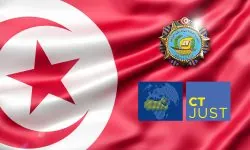
- Towards a U.S. Nuclear Renaissance?

- AI at War (3) – Hyperwar in the Middle east
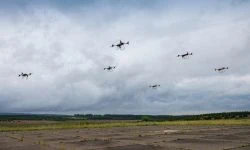
- AI at War (2) – Preparing for the US-China War?

- Niger: a New Severe Threat for the Future of France’s Nuclear Energy?
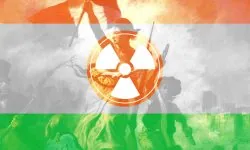
- Revisiting Uranium Supply Security (1)
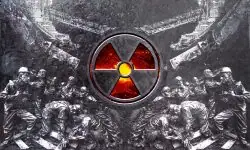
The very same day, Chinese foreign minister Wang Yi welcomed in Beijing the high level ministerial committee of the Joint Islamic-Arab Summit. Among the delegates were the foreign ministers of Saudi Arabia, Jordan, Egypt, Indonesia, as well as the Chadian Brahim Taha, head of the Organization of Islamic Cooperation (OIC). The delegation was in Beijing to ask China to insist on a permanent ceasefire in Gaza (Yew Lun Tian and Laurie Chen, “In Beijing, Arab and Muslim Ministers urge end to Gaza war”, Reuters, November 20, 2023).
This delegation was a follow up to the historic 11 November 2023 Islamic Arab-Iran conference. This event took place in Riyad, the Saudi Kingdom capital. Leaders of major Arab countries and Islamic powers attended this summit, such as Syrian president Bashar el Assad, Turkish president Recep Erdogan and Shiite Iranian President Raisi. Other guests were Qatar’s emir Tamim al Tani and Mahmoud Abbas, president of the Palestinian Authority. The aim of the conference was to condemn the Israeli offensive against Hamas in Gaza while calling for a ceasefire (“Arab-Islamic reject justifying Gaza war as Israeli self-defense”, Al Jazeera, 11 November 2023).
Meanwhile, after the positioning in October of two U.S. Navy aircraft carriers in the Mediterranean Sea along the Israeli littoral, a third was positioned off the coast of Oman.
This third carrier and its combat group reinforce the U.S. military presence in the Persian Gulf and in the Middle East (Tara Copp, “The U.S is moving quickly to boost Israel’s military. A look at what assistance is providing”, AP, 15 October 2023 and Sam LaGrone, “Aircarft carrier Dwight D. Eisenhower Now in Gulf of Oman”, USNI News, 13 November, 2023).
Thus, it is able to support the U.S. policy of deterrence against Iran as well as against the numerous militias that attack U.S. military bases in Syria and Iraq. Meanwhile, some Houti militias, which are meant to be Iran proxies, send missiles’ waves against Israel, while the Israeli Defense forces wages its war against Hamas in Gaza (Connor Echols, “Tracking the U.S Military build-up today in the Middle East”, Responsible Statecraft, October 25, 2023).
In other terms, while the war in Gaza rages, the political importance of China in the Middle East keeps on growing. Symmetrically, the U.S. military presence in the Middle East acts both as a deterrent and as an attractor for the attacks of the regional militias. Thus, the Chinese political influence versus the U.S. military one in the Middle East appears as being a new dimension of the global China-U.S. great power competition (John Mearsheimer, The Tragedy of Great Powers Politics, 2014).
In this article, we look at the development of this competition throughout the Middle East during the war in Gaza. We focus on the densification of the geoeconomic and political convergence between the Arab countries and China versus the heightening U.S. military presence.
Gaza, Riyad and Beijing: war on the Chinese Belt & Road
On 11 November, the Saudi Government held an extraordinary joint Summit of both the Arab League and the OIC. Among others, the conference gathered heads of state of Syria, Iran and of the Palestinian Authority.
The attendees used very strong language to denounce the Israeli war in Gaza, while praising Hamas (Aziz el Yaakubi and Nayera Abdallah, “Arab and Muslim leaders demand immediate end to Gaza war”, Reuters, November 12, 2023).
For example, Turkish president Recep Tayib Erdogan, asked for a condemnation of Israel and of its offensive in Gaza. He also asked for a permanent ceasefire and a permanent solution to the Israel/Palestine conflict (ibid).
Then, on 20 November, a delegation of foreign ministers of the Arab League and of the OIC went to Beijing and met with the Chinese vice-president Hang Zhen. The delegation was composed of ministers from Saudi Arabia, Egypt, Jordan, from the Palestinian authority, from Indonesia and from the OIC (“Arab Muslim delegation in Beijing asks for immediate Gaza cease fire”, VOA, November 20, 2023).
The delegation, which was going to meet each member of the Security Council, started its tour in Beijing. The Saudi foreign minister declared:
“We are here to send a clear signal: that is we must immediately stop the fighting and the killings, we must immediately deliver humanitarian supplies to Gaza …”
in Yew Lun Tiand and Laurie Chen, “In Beijing, Arab and Muslim Ministers urge end to Gaza war”, Reuters, November 20, 2023.
From Riyad to Beijing
From a geopolitical and strategic point of view, it is important to note that all the delegates to the 11 November and 20 November Beijing summits represent countries that are all members or partners of the Chinese Belt & Road initiative (BRI) (Jean-Michel Valantin, “Towards a US China War? (1) – The New Cold War and the Chinese Belt and Road go to the Arctic”, The Red Team Analysis Society, May 20, 2019 and « China, Saudi Arabia and the Arab AI Rise“, The Red Team Analysis Society, January 31, 2023).
This is also true of Israel, which develops strong ties with China and expands its cooperation with the “Middle Kingdom”. Israel is already a partner of the Asian infrastructure bank, i.e. the banking entity that finances BRI projects. To reinforce the Israel-China relationship, the Israeli government also contemplates the possibility to formally join the BRI, (Jean-Michel Valantin, “China, Israel and the New Silk Road”, The Red Team Analysis Society, June 8, 2015).
Indeed, the Gaza war generates massive tensions in the Middle East and the Persian Gulf. This war opposes the Hamas, historically supported by Iran and Qatar, to the Israeli military after the monstrous attacks of the 7 October 2023. Such is the scope of the conflict because of these chains of actors, that it triggers regional and world shockwaves (Bill Hutchinson, “Israeli-Hamas conflict: time line and key events”, ABC News, 30 October, 2023 ).
As it happens, this region is strategic for the BRI, because it is at the junction of the West Asian segments of the BRI and of the Mediterranean world. The BRI reinforces the political relationship between the Arab states, Iran and China.
In other words, the Gaza war is happening de facto inside a strategic regional sector of the New Silk Roads/Belt & Road Initiative.
So, for China, the Gaza war is of tremendous consequences.
It’s raining U.S. aircraft carriers
However, the war also attracts a massive U.S. military mobilization (Courtney Kube, “At least 45 service members may have been injured in Iran-linked attacks”, NBC News, November 6, 2023 and Connor Echols, “Tracking the U.S Military build-up today in the Middle East”, Responsible Statecraft”).
Two U.S. aircraft carriers operate from the Mediterranean Sea, in the vicinity of Israel, and one more positions itself off the coast of Oman. Those three U.S. Navy aircraft carriers are defining a strategic perimeter that encloses the Middle East from the Mediterranean Sea to the Persian Gulf. Thus, this perimeter defines the whole region as the theatre of operations of the Gaza war (“U.S. Aircraft Carriers – What they bring to the Middle-East”, Reuters, 16 October, 2023, and Sam LaGrone, “Aircarft carrier Dwight D. Eisenhower Now in Gulf of Oman”, USNI News, 13 November, 2023).
In this context, the three U.S. carriers and their combat groups are deterring Lebanese Hezbollah and “other hostile third parties”, i.e, Iran. This deterrence operation aims at blocking their direct involvement against Israel. As it happens, Iran is also a member of the Chinese BRI (Sebastian Goulard, “Iran China signed a 25 years agreement: a BRI milestone”, OBOREurope, 31 March, 2021).
Attacks of the Houthis
The influence of Iran can be felt through numerous proxy actors. For example, pro-Iran Houthi rebels are launching random missiles salvos against Israel. In the Red Sea, they started operations with hijacking an Israeli-linked cargo ship.
Meanwhile, regional Iran-proxy militias target U.S. land bases as well as Israel and cargo ships in the Red Sea (Jon Gambrell, “3 commercial ships hit by missiles in Houti attack in Red Sea, US warship downs 3 drones”, AP, 4 December).
From the Persian Gulf to China: an emerging energy and AI block?
In the meantime, the conflict contributes to transform China from being an active economic actor into a political and strategic player in the Middle-East.
The ever-growing Chinese political influence in the Middle-East intricately links itself with the Chinese energy interests in the region. In the first part of this series, we have studied how Saudi Arabia and China are mutually “pivoting” towards each other (Jean-Michel Valantin, “The war in Gaza and China’s pivot to the Middle East”, The Red Team Analysis Society, November 22, 2023). We saw how it is based on the Saudi oil exports to China as well as upon the development of artificial intelligence and nuclear power in the Saudi kingdom by China.
Oil for China
The same is true for Iran, after the signature in 2022 of the Iran-China 25 Years Cooperation agreement. This signature occurred despite the current regime of U.S. sanctions, forcefully denounced by both Iran and China (Maziar Motamedi, “Iran says 25 years agreement enters implementation stage”, Al Jazeera, 15 January, 2022).
The signature of the Iran-China 25 years agreement officially brings Iran in the Chinese BRI. Under the agreement, during the next 25 years, China will invest 400 billion dollars in Iran. In exchange, it will receive a steady oil supply. This humongous investment is divided in two parts.
A first 280 billion dollars part is dedicated to the development of the Iranian oil, gas and petrochemicals sectors. The second 120 billion dollars part is dedicated to transport and communication infrastructures (Simon Watkins, “China inks military deal with Iran under secretive 25 years plan”, OilPrice.com, 2020).
It must be noted that the Chinese communication, digital surveillance and AI giant ZTE will support the Iranian government’s effort by developing a network of landline, mobile and internet communications (Ghazal Vaisi, “The 25 years Iran-China, endangering 2500 years of heritage”, March 1, 2022).
This export of Chinese surveillance and digital technology appears as a BRI framework. Indeed, the same terms of exchange “resources vs technology” is also part of other deals. It is the case with Saudi Arabia and other Gulf States as well as with Serbia (Jean-Michel Valantin, “China, Saudi Arabia and the Arab AI Rise”, The Red Team Analysis Society, January 31, 2023 and “China, Serbia, AI and the Pincer Movement on Europe”, The Red Team Analysis Society, April 2, 2023) .
It is also the case, for example, of the China-Gulf states free trade agreement that should be signed at the end of 2023 or in 2024. This deal establishes that Qatar, Bahrain, Saudi Arabia, Koweit, Oman and the United Arab Emirates will export gas to China (Andy Sambridge, “GCC chiefs predicts deal with China Free Trade deal signed “soon”“, Arabian Gulf Business Insight, October 23, 2023) . Reciprocally, those countries will have access to Chinese digital and surveillance technologies (Mordechai Chaziza, “China-GCC digital economic cooperation in the age of strategic rivalry”, Middle East Institute, June 7, 2022).
“In the Middle” of Iraqi Oil
In Iraq, the government signed a massive oil and gas development deals with both China and Russia, in exchange for investments in the energy sector (John Calabrese, “Beijing to Baghdad: China’s growing role in Iraq’s energy sector”, Middle East Institute, June 7, 2023). Iraq is the third oil exporter to China, with 9.9 million tons of crude oil in 2022.
The first oil exporter to China is Russia, with 15.6 million tons. The second is Saudi Arabia, with 13.9 million and the UAE is ranking fourth, with 6.5 millions tons (“Iraq ranks third in China’s oil imports”, Shafaq.com, 2023-23-21). Furthermore, half of the Iraqi oil production comes from operations that are led by Chinese companies or from operations that involve China.
As it happens, in 2022, Chinese companies won 87% of all the Iraqi contracts in the energy sector (Will Crisp, “Chinese win 87% of Iraq’s energy contracts”, MEED Middle East Business Intelligence, 07 November, 2022). Especially, those companies obtained rights for the exploration and development of numerous energy operations. Most of the Chinese investments in Iraq take place within the Belt & Road energy investment framework (Jon Calabrese, ibid).
The Oil Block
Meanwhile, the Russian companies Lukoil and Rosneft also obtained other massive contracts in Iraq. Even if the French Total Energies is still an important partner, Western companies such as Exxon are very much on the losing side in Iraq (Calabrese, ibid).
In other words, when on 20 November 2023 the Chinese vice-president received representatives of the Arab League and of the OIC, including Iran, he received de facto delegates of the main oil and gas suppliers of his country. Those delegates represent or are also part of the OPEC+, of the BRICS Organization, and of the Shanghai Cooperation Organization.
And as it happens, all of those are also members of the Chinese Belt & Road Initiative. In other words, the BRI has become a major vehicle for Chinese energy investments as well as for digital, surveillance and artificial intelligence in the Middle East and in the Persian Gulf.
So, all of these countries and organizations benefit from their relationships with China. In the same dynamic, China needs them for its long term strategy of development. This takes place in the context of its hardening competition with the U.S. (Hélène Lavoix, “The War between China and the U.S- The Normative Dimension”, The Red Team Analysis Society, July 4, 2022).
From the “Great Game” to the “Go Game”
So, as it happens, the pro-palestinian stance that the Chinese government adopts is also, de facto, a common political platform with the Arab states and Iran. Doing so, Beijing sends a message to Israel as well as to the U.S. This message is not “only” about the Gaza war. It is as well about the new conjoined economic, political and strategic weight of the Arabic, Iranian and Chinese convergence.
Military power vs Political influence
However, the Gaza war is also a major attractor for U.S. “crisis management” military power. But this heavy U.S. involvement triggers numerous tensions and military incidents in a region where China and Russia are rapidly developing their influence.
In this regard, the U.S. remains the main military power in the region. However, China appears as becoming a rapidly-growing economic, technological and political player. And the Middle Kingdom benefits from the repulsive effect triggered by the renewed presence of the U.S. military.
Indeed, from a Chinese point of view, the Middle East and the Persian Gulf are now particularly “useful spaces”. This notion of “usefulness” is anchored in Chinese philosophical and strategic thought. (Valantin, “China and the New Silk Road: the Pakistani strategy”, The Red Team Analysis, May 18, 2015).
That dimension is grounded in an understanding of the spatial dimension of China, in the geographical sense. Space is not only conceived as a support to spread Chinese influence and power to the “outside”. It also allows the Middle Kingdom to “aspirate” what it needs from the “outside” to the “inside”. (Quynh Delaunay, Naissance de la Chine moderne, L’Empire du Milieu dans la globalisation, 2014).
Welcome on the Go Board
Therefore we qualify some spaces as being “useful” to the deployment of the Chinese strategy. It is also why each “useful space” is related to, and is “useful”, to other “useful spaces”. Thus this “chain” of “useful spaces” relates to the China’s space. In the same dynamic, the different countries involved in the deployment of the Chinese strategy are “useful spaces” for China.
This philosophy of space and time as flows is the basic material of the Chinese strategic tradition. As Scott Boorman, Arthur Waldron and David Lai, among others, establish quite clearly, this tradition expresses itself especially well through the game of Go.
This very ancient game emphasizes the importance not to control, but to master the space of the adversary (Arthur Waldron, “China’s Military Classics”, Joint Forces Quarterly, Spring 1994). The strategy is to “convert” that space into one’s own. To do so, one has to “surround in order to convert “ conquer” the pieces, i.e. the space of the adversary.
So, the Chinese presence in the Middle East and in the Persian Gulf may very well be understood as a “conversion” of the Arab and Iranian “spaces” into “useful spaces” for China. In the same dynamic, this “conversion” weakens the influence of its main competitor, i.e the U.S. Reciprocally, China becomes a “useful” Great power for Middle East countries.
However, it now remains to be seen if the Gaza war accelerates, or not, the heightening of tensions between China and its partners on the one hand, the U.S and its own partners and allies on the other.

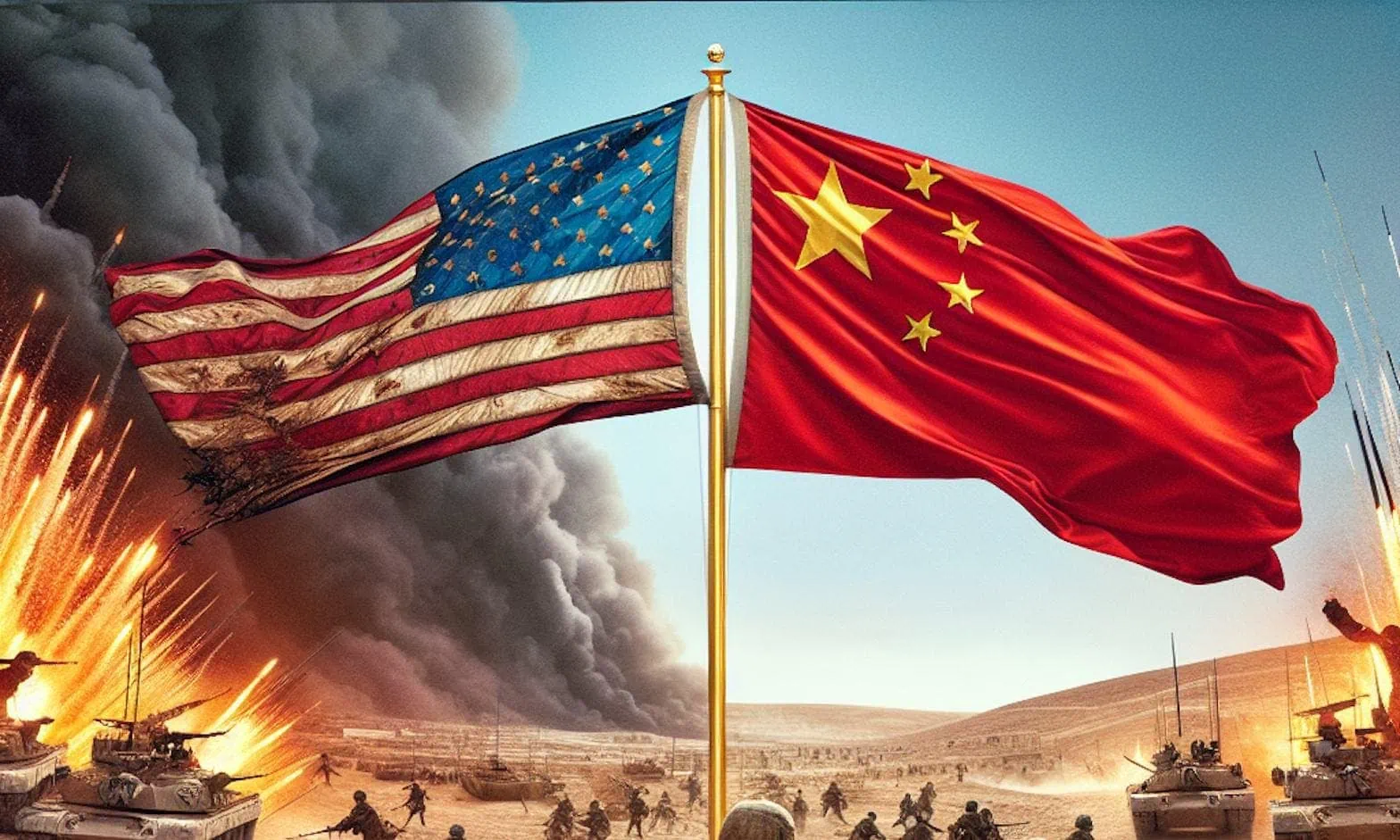






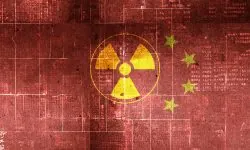
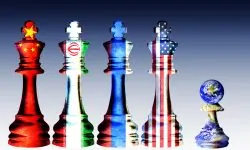







Très pertinent. Souligne en creux le besoin vital d’avoir une politique autonome franco européenne pour le Moyen orient… “as a long term useful space”